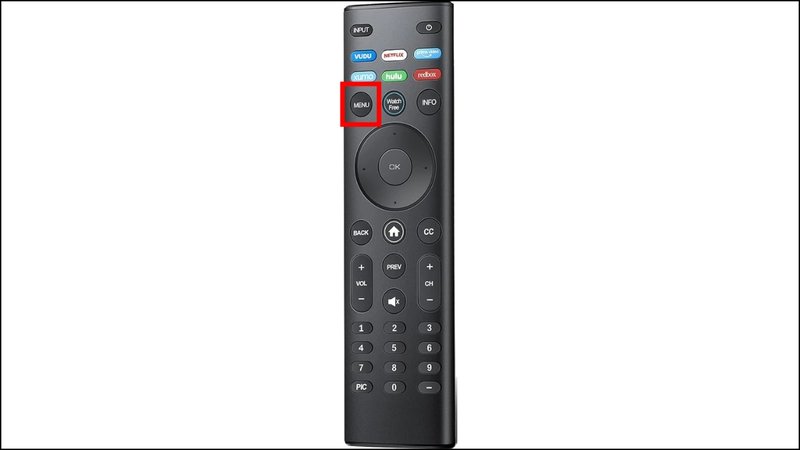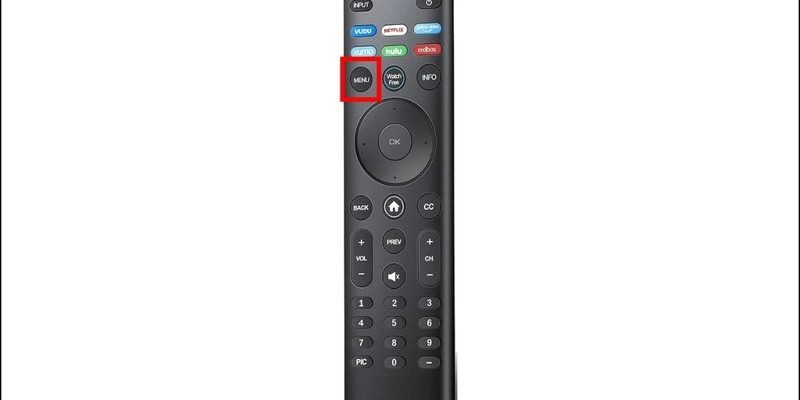
Honestly, this might sound a bit technical at first, but it’s just like introducing two buddies at a party. You don’t need to know their entire backstory (or decode secret signals); you just need the basics—what buttons to push, what lights to watch for, and what to do if they give you the silent treatment. Let’s walk through the process together, and I’ll explain each step and hiccup along the way, whether you’re using a simple Vizio remote or the newer backlit models.
Understanding Vizio Remotes and Soundbar Compatibility
Before we jump into the step-by-step how-to, let’s set the stage: not every remote is created equal. Some Vizio TV remotes have more buttons or fancier features, but almost all share a standard set of functions that can control both a Vizio TV and a compatible Vizio soundbar. If your soundbar and remote are from the same era (say, both purchased in the last seven years), you’re already ahead of the game.
Here’s the thing: Vizio designs many of its soundbars to “listen” for a TV remote’s signals—especially volume and mute. The trick is that the remote needs to talk in a language (infrared code, to be nerdy) that the soundbar understands. Sometimes, you need to “train” them to recognize each other, especially if you’re working with a universal remote or if you’ve replaced the batteries recently.
You might be wondering, “But what if my soundbar isn’t Vizio?” Great question. If you have a non-Vizio soundbar, pairing can get trickier. Some universal remotes can sync with other brands using a setup code. But for this guide, I’ll focus on the original Vizio remote-to-soundbar pairing. It’s the most common scenario, and honestly, the least headache-inducing.
How to Prepare Your Devices Before Pairing
Alright, let’s lay out your mini home theater like a pro. First, double-check that your soundbar and TV are both plugged in and powered on. I know, it sounds obvious, but the number of times I’ve had a “tech problem” that was basically an unplugged cable? Embarrassing.
Next, make sure your Vizio TV remote actually has good batteries. A dying battery can make the signal weak, and then nothing happens—sort of like trying to text with one bar of cell service in the woods. If your remote feels sluggish or only works from certain angles, swap in fresh batteries before you start. Trust me: troubleshooting’s a pain if your tools are half-dead.
Now, look for the connection between your TV and soundbar. Most Vizio setups use either HDMI ARC or an optical cable. Why does this matter? The HDMI ARC connection allows both devices to “talk” and lets you control the soundbar with your TV remote almost effortlessly. If you’re using an optical cable instead, you might need to enable specific audio settings on your TV to make sure the remote commands pass through. It’s a tiny step, but it makes a world of difference.
Step-By-Step: Pairing Your Vizio TV Remote to the Soundbar
Here’s where the magic (or, honestly, just good engineering) happens. Grab your Vizio TV remote and get cozy near your soundbar—no need to crawl behind the TV just yet.
- Step 1: Power everything on. Your TV, soundbar, and remote all need to be awake. Confirm your soundbar is set to the right input (usually “TV” or “HDMI ARC”).
- Step 2: Locate your soundbar’s remote pairing mode. Many Vizio soundbars have a button labeled “Input” or “Bluetooth.” Press and hold the “Input” button on the soundbar itself (not the remote) for about 5 seconds. Some models will flash their LEDs to tell you they’re ready to sync.
- Step 3: Try your TV remote’s volume buttons. Aim your Vizio TV remote straight at the soundbar and press “Volume Up” or “Volume Down.” If you hear the volume change, you’re done! Your devices are now paired. If not, don’t panic—we’ll troubleshoot in the next section.
Here’s a tiny story: I once spent twenty minutes mashing every button on my remote, desperate for a sign. Turns out, I hadn’t pressed and held the pairing button long enough. Some models are finicky, so patience pays off. Watch the soundbar’s lights—if they blink or change color, that’s your sign you’re on the right track.
Troubleshooting: What If Pairing Doesn’t Work?
Sometimes, even when you follow the instructions to the letter, your Vizio TV remote and soundbar just refuse to communicate. Don’t sweat it—it happens to the best of us. The good news? There are a handful of common fixes that work in most cases.
First thing to check is your batteries. I know, I sound like a broken record, but even slightly drained batteries can make your remote’s signal too weak to reach the soundbar. Swap in a new set if you haven’t already. Also, make sure you’re pointing the remote directly at the soundbar’s IR (infrared) receiver, not at the TV, since the soundbar isn’t psychic.
If things still aren’t working, it’s time for a soundbar reset. Most Vizio soundbars can be reset by pressing and holding both the “Bluetooth” and “Volume Down” buttons on the soundbar for about 5 seconds. You’ll see the LED indicators flash. This will wipe any old pairings and let you try again with a clean slate.
Sometimes, the simplest fix—power cycling everything—works best. Unplug your TV, soundbar, and remote batteries for a minute, then plug them back in. You’d be surprised how many tech gremlins this chases away.
Using Universal Remotes and Code Syncing
Let me explain how universal remotes fit into this puzzle. If your original Vizio remote is MIA (or crammed in a drawer somewhere), a universal remote can still get the job done. These remotes need to be programmed using a code that matches your soundbar’s brand—usually found in the remote’s user manual or online.
Here’s how it works: You enter “code mode” on the universal remote, punch in the appropriate Vizio code (something like 1009 or 31517, but check your manual!), and wait for the remote’s light to signal a successful pairing. It can feel a bit like cracking a safe, but it’s usually straightforward.
Universal remotes are a lifesaver if you’re juggling multiple devices (TV, soundbar, streaming box). The downside? Not every universal remote supports every soundbar feature. Volume and muting usually work, but things like sound modes or Bluetooth controls might be hit or miss.
If pairing fails, sometimes a quick reset or trying a different code does the trick. Again, if universal remotes feel overwhelming, you can always order a replacement Vizio remote for that plug-and-play convenience.
Background: How the Pairing Process Actually Works
Ever wonder what’s really happening behind the scenes when you pair a Vizio TV remote to a soundbar? The secret sauce is infrared communication—little pulses of light (invisible to our eyes, but not to your devices) that carry all the button commands. It’s like sending Morse code from your remote to the soundbar, over and over.
Why does this matter? Sometimes, interference from sunlight, fluorescent lights, or even a particularly shiny coffee table can block or scatter the IR signal. If your soundbar is on a lower shelf or behind a plant, try moving things around to give the remote a clear shot. Think of it like a game of laser tag: If the path is clear, you win!
Soundbars and remotes “remember” each other after pairing, which means you usually only have to go through the process once—unless you change batteries, unplug things for a long time, or get a new remote. So, if you’re troubleshooting repeatedly, check for any obstacles or sources of IR interference first.
When You Should Reset or Re-Pair Your Devices
Here’s when a reset can save the day. Over time, your soundbar might “forget” its pairing, especially if you’ve changed TV inputs, updated firmware, or experienced a power surge (lightning storms, anyone?). If your volume buttons suddenly stop working or the soundbar isn’t responding like it used to, don’t panic—a reset is usually all it takes.
To reset, press and hold both the “Bluetooth” and “Volume Down” buttons on the soundbar for 5 seconds. You’ll probably see the LED lights flash in a fun little pattern—kind of like your soundbar saying, “Let’s start fresh.” After the reset, repeat the original pairing process with your Vizio TV remote.
Sometimes, remote pairing problems are actually caused by other settings—like your TV’s audio output. Double-check that your TV is sending sound through HDMI ARC or Optical and not just its internal speakers. Small detail, big impact.
If you’ve tried all this and your devices still act stubborn, it could be a sign that your remote or soundbar’s IR receiver is malfunctioning. In rare cases, a quick call to Vizio support or a trip to the electronics store is your ticket to a quick fix.
Comparing Alternatives: Brand vs Universal Remotes
You might be asking, “Is it better to stick with the Vizio remote, or should I upgrade to a universal one?” Here’s my take, after more than a few living room battles with lost remotes and mismatched batteries.
Vizio’s original TV remote is hands-down the most reliable for pairing to a Vizio soundbar. The code and firmware are designed to play nicely together, and setup is usually trouble-free. Plus, every function works as you’d expect—no weird quirks or missing buttons.
Universal remotes are great for minimizing clutter, especially if you’ve got a TV, soundbar, Blu-ray player, and maybe even a streaming stick. But they can be finicky about setup codes and might not always support every soundbar feature. Still, if you’re willing to spend a few extra minutes coding and syncing, they’re a convenient alternative.
There are even “smart” remotes that use Wi-Fi or Bluetooth for control, which can add more complexity but also more power. For most people, though, sticking with a Vizio remote—or a well-programmed universal—is the best combo of simplicity and reliability.
Final Thoughts: Making Life Easier With One Remote
Feeling that tiny surge of victory when your Vizio TV remote finally changes your soundbar’s volume? It’s honestly a little thrill—like solving a mini-mystery in your own living room. Once your devices are paired and synced, you’ll wonder how you ever put up with juggling two (or more) remotes just to watch TV.
The key is patience and a little attention to the small stuff: fresh batteries, clear lines of sight, the right cables, and the occasional reset. Most hiccups are nothing a careful walk-through and a steady hand can’t fix. And hey, next time your friend can’t get their setup to work, you’ll be the tech genius with all the answers.
So, kick back, crank up the volume, and enjoy having just one remote to worry about. Your couch cushions—and your sanity—will thank you.
